Are Bamboo Sheets Actually Eco-Friendly?
When it comes to creating a sustainable and eco-friendly home, every choice counts — including the sheets you sleep on. Bamboo sheets have gained a lot of attention for being soft, breathable, and often labeled as sustainable. But are bamboo sheets really as eco-friendly as they claim to be?
Today, we’re taking a closer look at bamboo sheets, from how they’re made to their overall environmental impact. If you’re wondering whether switching to bamboo bedding is a sustainable choice for your home, you’re in the right place. Let’s explore whether bamboo sheets truly live up to their eco-friendly reputation.
What Are Bamboo Sheets?
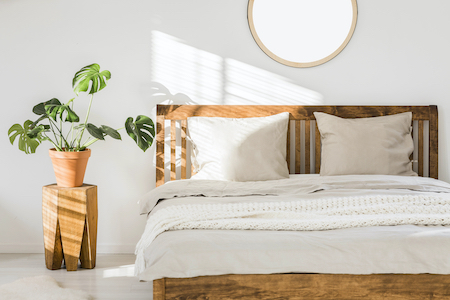

Bamboo sheets are a type of bedding made from bamboo fibers. Known for their softness and breathability, bamboo sheets have become a popular alternative to traditional cotton or synthetic fabrics.
The process begins with harvesting bamboo plants, typically the fast-growing Moso variety, which is not a food source for pandas. Bamboo is then processed into fibers that are spun into threads to make the sheets.
Related: Easy Ways You Can Create an Eco-Friendly Sanctuary in Your Bedroom
There are different types of bamboo fabrics, with viscose, rayon, and lyocell being the most common. Although they all come from the same plant, the method of extracting the fibers and turning them into fabric differs.
Bamboo sheets are typically praised for being naturally hypoallergenic, moisture-wicking, and resistant to dust mites and bacteria, making them an appealing choice for anyone with sensitive skin or allergies. They also tend to stay cool in warm weather, making them a great choice for sleeping in warm weather.
How Are Bamboo Sheets Made?
Bamboo sheets are made by breaking down the bamboo plant into fibers that can be spun into yarn. The process generally starts by harvesting bamboo, which grows rapidly and regenerates without the need for pesticides or extensive irrigation.
However, the method used to convert bamboo into fabric varies and has a significant impact on how eco-friendly the final product is. The two most common processes are mechanical and chemical.
Related: Should You Make the Switch to Bamboo Toilet Paper?
The mechanical process is the most eco-friendly. It involves crushing the bamboo plant and using natural enzymes to break down the fibers before spinning them into yarn. This method, however, is labor-intensive and expensive, which is why mechanically produced bamboo sheets are less common.
The chemical process is more widely used. During this process, the bamboo is dissolved in harsh chemicals like sodium hydroxide or carbon disulfide to break it down into a pulp, which is then reformed into fibers. While this method creates a soft and silky fabric, it raises environmental concerns due to the toxicity of the harmful chemicals used and the potential for water pollution if not managed properly.
Are Bamboo Sheets Truly Sustainable?
Whether bamboo sheets are eco-friendly depends largely on the production process. Bamboo is a sustainable plant. It grows incredibly fast, requires little water, and regenerates on its own after being harvested. However, the process of turning bamboo into soft, usable fabric can be either sustainable or harmful, depending on how it’s done.
Mechanically processed bamboo, often labeled as “bamboo linen,” is the most eco-friendly option. It involves fewer chemicals and maintains many of the plant’s natural qualities. Unfortunately, it’s rare and expensive.
Related: Enjoy Your Healthiest and Best Sleep Ever With a Non-Toxic Mattress
The chemical processes used to make bamboo viscose or rayon raise more concerns. Although these sheets are made from a renewable resource, the use of toxic chemicals in the production process can negate some of the environmental benefits. However, if manufacturers use a closed-loop system — where the chemicals are captured and reused — the environmental impact is reduced.
In short, bamboo sheets can be eco-friendly, but you need to pay attention to how they’re made. Certifications from reputable organizations can help guide you to more sustainable options.
Certifications to Look for in Eco-Friendly Bamboo Sheets
When shopping for truly eco-friendly bamboo sheets, you can ensure the product is sustainably made by looking for certain certifications. Here are a few key certifications to consider:
- OEKO-TEX Standard 100: This certification ensures that the sheets are free from harmful substances. If a bamboo sheet is OEKO-TEX certified, you can rest assured that it doesn’t contain any dangerous chemicals that could impact your health.
- GOTS (Global Organic Textile Standard): While primarily focused on organic cotton, GOTS-certified bamboo sheets would meet strict environmental and social criteria throughout the production process, from raw material to finished product.
- FSC (Forest Stewardship Council): If the bamboo used to make the sheets is FSC-certified, it means that the bamboo was grown in a way that protects forests and ensures long-term environmental sustainability.
These certifications can give you peace of mind that the bamboo sheets you’re purchasing are aligned with sustainable and ethical standards.
If you decide you want to go with bamboo sheets, here are a few highly-rated options that follow these standards:
The Environmental Impact of Bamboo Cultivation
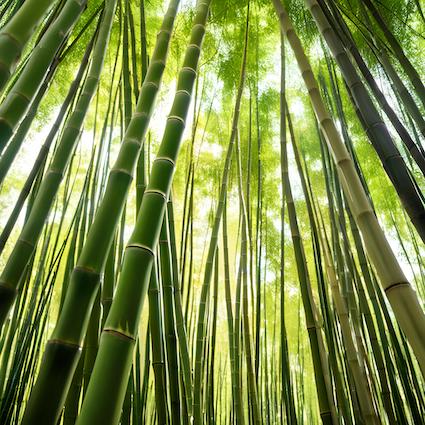

One of the major benefits of bamboo as a material is how environmentally friendly its cultivation process is. Bamboo is one of the fastest-growing plants on the planet, sometimes growing up to three feet per day.
It requires very little water and doesn’t need pesticides or fertilizers, making it a low-maintenance crop. Additionally, bamboo’s root system is robust and helps to prevent soil erosion while improving soil health by cycling nutrients.
The fact that bamboo regenerates after being harvested means that it doesn’t need to be replanted. The rapid growth and low-impact farming methods make bamboo an appealing option for those concerned about the environmental impact of traditional agriculture.
However, the cultivation of bamboo isn’t without its challenges. In regions where bamboo farming is expanding, it’s important to ensure that natural ecosystems aren’t being cleared to make way for bamboo plantations. Sustainable bamboo farming practices, which maintain biodiversity and avoid monoculture, are essential to maintaining the plant’s eco-friendly reputation.
Bamboo vs. Cotton: Which Is Greener?
Cotton has always been a conventional fabric used to make bed sheets, and it might be an option you’re considering. When comparing bamboo and cotton, both materials have their pros and cons.
In terms of cultivation, bamboo has a clear advantage. It grows quickly, requires minimal water, and doesn’t need pesticides or fertilizers. Cotton, on the other hand, is a water-intensive crop that relies heavily on pesticides, which contribute to soil degradation and water pollution.
However, the manufacturing process is where bamboo can fall short. While bamboo is renewable, the chemical processes to turn it into a fabric can involve toxic substances, which can harm the environment if not handled responsibly. Cotton, especially organic cotton, generally undergoes a less harmful manufacturing process.
Related: Microfiber vs Cotton- Which One Is More Eco-Friendly? (The Answer Might Surprise You!)
Organic cotton is often a better choice if you’re looking for the most eco-friendly option. It’s grown without synthetic pesticides or fertilizers and has a lower carbon footprint. However, it still requires more water and land compared to bamboo.
Ultimately, the eco-friendliness of these two options for bed sheets depends on how the bamboo is processed and whether the cotton is organically grown. Both materials have the potential to be sustainable, but it’s important to consider the entire lifecycle of the product.
If you’re interested in going with organic cotton sheets, here are several good options to consider:
Pros and Cons of Bamboo Sheets
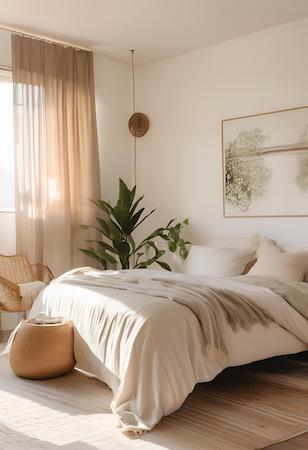

Like any product, bamboo sheets come with their own set of advantages and disadvantages. If you’re thinking about getting bamboo sheets, consider some of these pros and cons.
Pros:
- Softness and Comfort: Bamboo sheets are incredibly soft, often compared to the luxurious feel of silk or Egyptian cotton.
- Breathability: They are naturally moisture-wicking, which can help hot sleepers stay cool and dry.
- Hypoallergenic: Bamboo sheets resist dust mites and bacteria, making them a great choice for allergy sufferers.
- Eco-Friendly Cultivation: Bamboo grows quickly, without the need for pesticides, making its cultivation highly sustainable.
Cons:
- Chemical Processing: Many bamboo sheets are made using harsh chemicals in the production process, which can negate some of the eco-friendly benefits of bamboo.
- Cost: High-quality bamboo sheets, especially those made through eco-friendly processes, can be more expensive than cotton or synthetic options.
- Durability: Bamboo sheets, depending on the type of fabric, may not be as durable as cotton, especially if they’re made using chemical processes.
Weighing the pros and cons can help you decide whether bamboo sheets align with your values and needs.
How to Sustainably Care for Your Bamboo Sheets
Sustainably caring for bamboo sheets helps prolong their lifespan and reduces their overall environmental impact. Bamboo sheets are generally low-maintenance, but a few simple practices can make a big difference.
- Wash in Cold Water: Bamboo fibers can break down more quickly when exposed to high temperatures. Washing your sheets in cold water not only protects the fibers but also reduces energy usage.
- Use Gentle Detergents: Harsh detergents can weaken the fibers over time. Opt for eco-friendly, gentle detergents that are free from bleach or fabric softeners.
- Line Dry When Possible: Air drying your bamboo sheets is the most eco-friendly option, as it saves energy and reduces wear on the fabric. If you do use a dryer, choose a low heat setting to avoid damaging the fibers.
- Avoid Overwashing: Bamboo sheets naturally repel odors and bacteria, so you may not need to wash them as frequently as cotton sheets. Washing only when necessary helps conserve water and energy.
By taking these steps, you can keep your bamboo sheets in great condition while minimizing their environmental footprint.
Are Bamboo Sheets Worth the Investment?
Bamboo sheets often come with a higher price tag than traditional cotton or polyester sheets, which may make you wonder if they’re worth the investment. When weighing the cost, it’s important to consider the benefits they offer.
First, bamboo sheets are known for their luxurious feel, breathability, and hypoallergenic properties, which can significantly improve your sleep experience. They’re especially great if you sleep hot, as they wick away moisture and help with temperature regulation.
From an environmental perspective, bamboo sheets can be worth the investment if you opt for ones made through eco-friendly processes. Look for sheets that have certifications like OEKO-TEX or FSC to ensure you’re getting a product that aligns with your values.
While the upfront cost may be higher, bamboo sheets can last a long time if cared for properly. Their natural resistance to bacteria and odors means they don’t need to be washed as frequently, which can extend their lifespan and save on water and energy costs over time.
Bottom Line: Should You Choose Bamboo Sheets?
So, should you make the switch to bamboo sheets? It ultimately depends on your priorities. If you’re looking for soft, breathable sheets that are naturally hypoallergenic and moisture-wicking, bamboo sheets could be your best option. They’re particularly beneficial for those with sensitive skin or anyone who tends to sleep hot.
From an eco-friendly standpoint, bamboo sheets can be a sustainable option, but only if you choose products that are made through environmentally responsible processes. Look for certifications to ensure that your sheets are produced in a way that minimizes their environmental impact.
If your goal is to reduce your carbon footprint, bamboo sheets made through mechanical processes or closed-loop chemical systems are ideal. However, if budget is a concern, you may want to consider whether another eco-friendly material like organic cotton might suit your needs.
In the end, bamboo sheets can be a worthwhile investment for both your sleep quality and the planet, as long as you make informed choices.
More Helpful Tips on Eco-Friendly Living
Did you enjoy learning about whether or not bamboo sheets are eco-friendly? Are you interested in discovering other helpful tips you can use to live a more sustainable life? Then please be sure to take a look at some of our other popular posts:
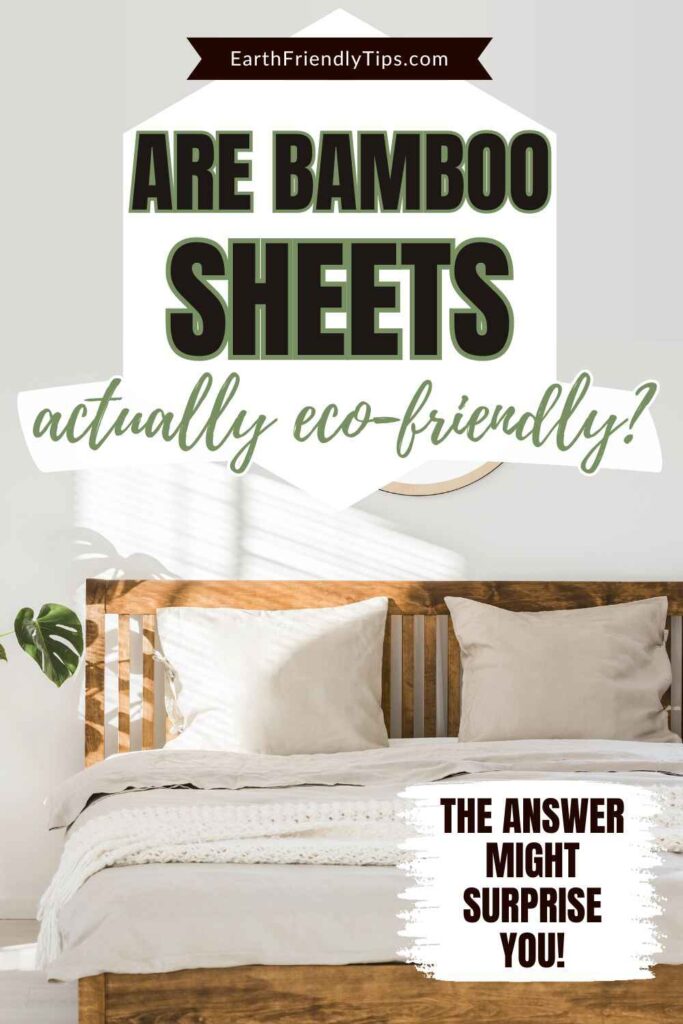

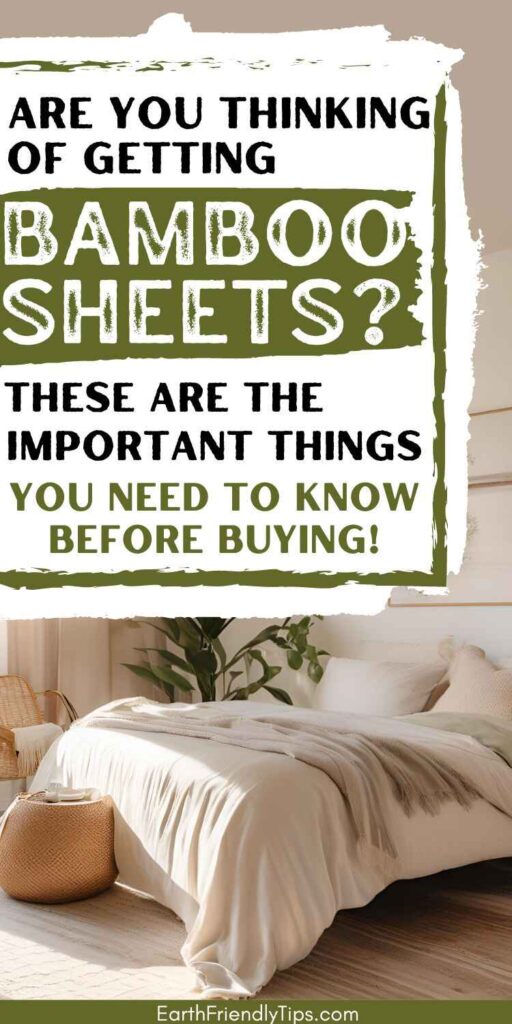

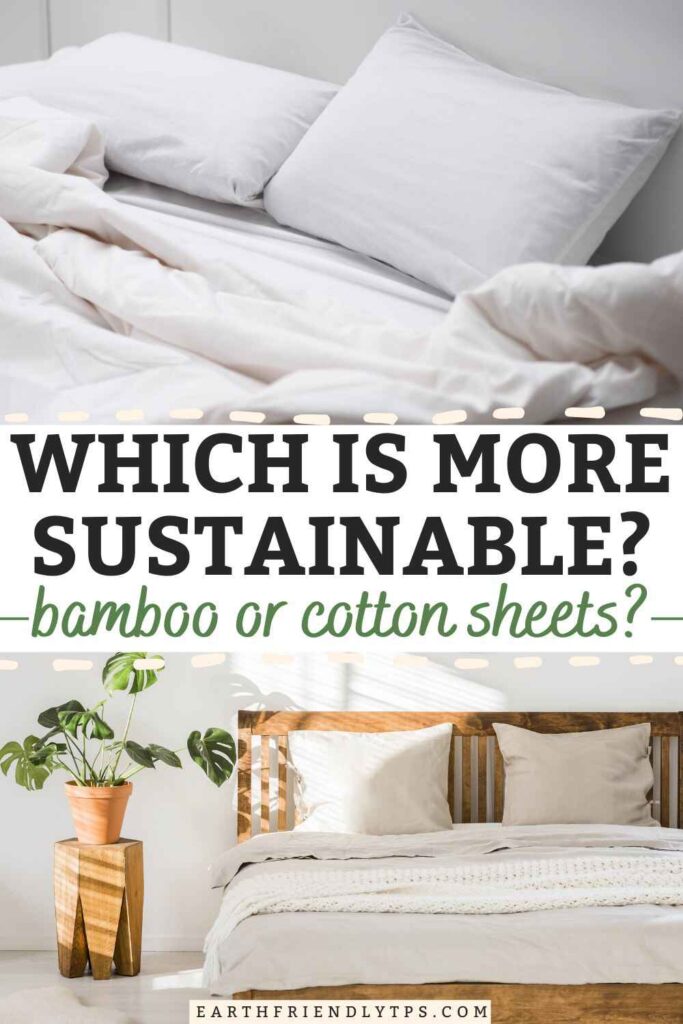

Leave a Reply